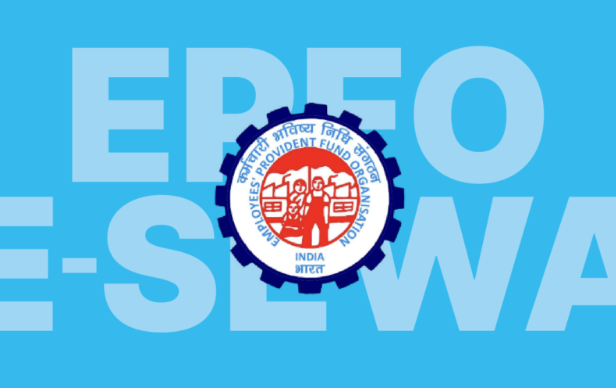
Why EPFO Minimum Pension Reform is Urgently Needed
- Book My Author
- Business
- 2025-09-19 16:34:11
- 812K
The Employees' Provident Fund Organisation (EPFO) plays an essential role in securing the financial future of millions of Indian workers. However, one of its critical components, the EPFO minimum pension, has raised persistent concerns due to its inadequacy in meeting the basic needs of retirees. Despite years of discussions among policymakers, the minimum pension remains far below the level required to sustain a decent living standard, particularly for retired employees from lower-income groups. This article delves into the urgent need for reforms in the EPFO minimum pension, analyzing its current scenario, its impact on retirees, and the broader implications for society.
The Current Status of EPFO Minimum Pension
The EPFO minimum pension under the Employees' Pension Scheme (EPS-1995) aims to provide a safeguard for workers upon retirement. As of now, the assured minimum monthly pension under EPS-1995 is ₹1,000, a figure that has remained unchanged since its introduction in 2014. While ₹1,000 may have appeared acceptable at that time, inflation and rising costs of living have rendered this amount insufficient for even basic needs, such as food, healthcare, and utilities.
According to estimates from the Reserve Bank of India, the cost of inflation has averaged around 5% annually over the last decade, significantly reducing the purchasing power of ₹1,000. For instance, if ₹1,000 in 2014 was worth ₹1,000, its worth has reduced to just about ₹640 in real terms today, implying that retirees are struggling even more to make ends meet.
Why the Current EPFO Minimum Pension Is Inadequate
1. Rising Cost of Living
India has undergone rapid economic and urban transformation in the past decade, with prices escalating for essentials such as food, accommodation, and healthcare. The cost of living in urban areas is even higher, further burdening retired employees who have no other substantial post-retirement income. According to reports, the average monthly expenses for a retiree living alone in India can range between ₹8,000-₹10,000, highlighting how far the EPFO minimum pension falls short.
2. Health and Medical Costs
The retiree age group is especially prone to higher medical expenses. From consultations to medications and diagnostics, healthcare costs in India have risen significantly. A single medical emergency could potentially wipe out any savings retirees might have accumulated during their working years. Compare this with a meager ₹1,000 minimum pension, and one realizes the financial vulnerability of many EPFO subscribers.
3. Impact on Families
If retirees are unable to sustain themselves financially, the burden often shifts to their children and families. This dependency creates intergenerational financial stress. A revised or increased EPFO minimum pension could ease such financial strain and empower retirees to live independently and with dignity.
EPFO Higher Pension: The Alternative for Some
The EPFO offers options for subscribers to secure a significantly higher pension amount at retirement. Under recent developments, employees and employers can jointly contribute more to the EPS based on the actual basic salary rather than the statutory wage ceiling of ₹15,000. While such EPFO higher pension schemes provide an opportunity for employees to plan better financial security, they are only viable for those with higher earnings during their working years.
Many lower-income workers, who are forced to stick with the statutory contribution limits, still fall under the minimum pension category upon retirement. This disparity highlights the urgent need to revisit the EPFO minimum pension amount to ensure equitable treatment across subscriber demographics.
Financial Calculation: Illustrating the Challenge
Let us break down the insufficiency of the current EPFO minimum pension using simple calculations.
1. Scenario 1: Retiree's Basic Needs with ₹1,000 Monthly Pension
Assuming a retiree lives alone and has minimum monthly expenses:
- Food: ₹3,000
- Healthcare: ₹2,000
- Utilities (electricity, water, mobile): ₹1,500
- Miscellaneous (clothing, transportation): ₹1,000
Total Monthly Expenses: ₹7,500
Under the current EPFO minimum pension, retirees are left with a deficit of ₹6,500 every month, forcing them to depend on family members or look for alternative income sources.
2. Scenario 2: Adjusted Pension Considering Inflation
If the EPFO minimum pension is adjusted for inflation (say by 5% annually since 2014), the current pension amount could be increased to approximately ₹1,600. While this would slightly ease the burden, retirees still face a deficit of nearly ₹5,900 every month, underscoring the inadequacy of even marginal adjustments.
Challenges in Implementing Reforms to EPFO Minimum Pension
While the need for reforms is evident, increasing the EPFO minimum pension faces practical challenges:
1. Financial Strain on the EPFO Fund
Pension reforms often face resistance due to funding issues. Raising pensions without altering the contribution structure could create a significant financial burden on the EPFO corpus, potentially impacting its sustainability.
2. Balancing Equity
Increasing the EPFO minimum pension might necessitate changes to contribution rates or caps, but such amendments could disproportionately affect lower-income employees. Any reform would require careful balancing to ensure fairness across different demographics.
3. Stakeholder Resistance
Policymakers face resistance from employers who may view higher contribution requirements as an additional financial burden. Balancing stakeholders’ interests without compromising retirees’ financial security remains a critical challenge.
Social and Economic Implications
The inadequacy of the EPFO minimum pension goes beyond individual hardships. It creates broader societal challenges, such as:
- Increased Dependency: Retirees relying on children or extended family for financial support perpetuate cycles of economic insecurity.
- Healthcare Costs on Society: Retired individuals unable to afford medical care often rely on subsidized or public healthcare systems, increasing societal burdens.
- Reduced Spending Power: Lower pension amounts curtail consumption, directly impacting the economy by reducing demand for goods and services.
Looking Ahead
The urgent need for EPFO minimum pension reform cannot be overstated. With India’s aging workforce transitioning into retirement, it is imperative to address the glaring inadequacies of the existing system. While the topic of reform involves technical and stakeholder hurdles, the core objective should be ensuring that retirees no longer face financial insecurity as they age.
Disclaimer
This article is intended for informational purposes only. Readers are encouraged to undertake independent research and consult qualified financial advisors to evaluate the pros and cons of trading in the Indian financial market. The content provided herein is not financial advice, recommendation, or actuarial consultation.
Summary:
The EPFO minimum pension of ₹1,000 per month remains alarmingly insufficient in addressing the basic needs of retirees. Rising inflation, escalating healthcare costs, and increased dependency on family members illustrate how retired individuals struggle to cope with financial insecurity. For most lower-income retirees, the current minimum pension cannot sustain even the most modest lifestyle, leaving them with deficits of ₹6,000-₹7,000 monthly after accounting for basic expenses. The EPFO higher pension offers some relief, but only to high-income earners who can contribute more during their working years, leaving vast sections of retirees in financial distress.
Challenges in reforming the minimum pension include potential burden on EPFO’s fund sustainability and resistance among stakeholders, such as employers. However, these hurdles should not detract from the fact that the existing pension amount is woefully inadequate and fails to align with India's economic realities. Addressing this issue is vital not only for retirees but for broader societal stability and economic growth. This article highlights the pressing need for systemic evaluation and reform while reminding readers to assess financial schemes carefully before investment or trading decisions.










